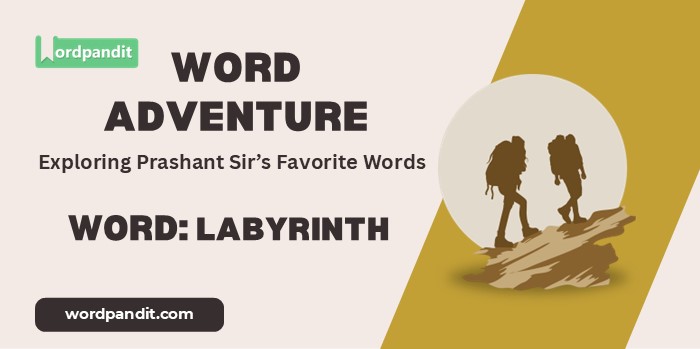Word Adventure: Labyrinth
The Headline
“Labyrinth: Where Mythology Meets Architecture in a Maze of Meaning”
The Scoop
In the vast tapestry of language, some words carry within them entire worlds of story and symbolism. ‘Labyrinth’ is one such word – a term that winds its way through ancient mythology, architectural history, and modern metaphor. Let’s explore this intricate word that has become synonymous with complexity and challenge.
Let’s Break It Down
The Plot Thickens
The story of ‘labyrinth’ begins in ancient Crete, where according to Greek mythology, King Minos commissioned the legendary craftsman Daedalus to build an intricate structure to house the Minotaur – a fearsome creature that was half-man, half-bull. This original labyrinth was said to be so complex that even its creator barely escaped its confines.
Unlike a simple maze, which is designed to confuse with multiple paths and dead ends, a traditional labyrinth typically has only one path leading to its center. This distinction has been somewhat blurred in modern usage, where ‘labyrinth’ often describes any complex or confusing system.
Throughout history, labyrinths have appeared in various cultures, from medieval cathedral floors to modern meditation gardens, evolving from a symbol of entrapment to one of spiritual journey and self-discovery.
Word in the Wild
The Twist
Here’s an intriguing aspect of ‘labyrinth’: while we often think of it as a place of confusion and disorientation, many cultures have used labyrinths as tools for meditation and clarity. Walking a labyrinth’s single path can be a mindful practice, helping to quiet the mind and achieve focus. This dual nature – as both a symbol of confusion and clarity – makes ‘labyrinth’ a particularly rich metaphor for life’s journey itself.
Make It Stick
Labyrinth: Where every wrong turn leads to the right destination!
Your Turn
Think about the labyrinths in your own life. What complex situations have you navigated that seemed impossible at first but led to unexpected discoveries? Share your labyrinthine experiences in the comments below. Let’s explore how these metaphorical mazes shape our journeys and growth!
Down the Rabbit Hole
- Curious about ancient labyrinths? Explore the historical sites of Knossos, Chartres Cathedral, or the Egyptian Labyrinth.
- Interested in the psychology of mazes? Research spatial cognition, problem-solving, and the concept of wayfinding.
- Want to dive deeper into labyrinth symbolism? Look into Carl Jung’s writings on labyrinths as archetypes of the collective unconscious.
The Last Word
As we emerge from our exploration of ‘labyrinth’, I hope you’ve gained a deeper appreciation for this word that connects us to ancient mysteries while illuminating modern complexities. Whether you’re walking a medieval cathedral labyrinth or navigating life’s twisting paths, remember that sometimes the journey itself is the destination. Until our next word adventure, this is Prashant from Wordpandit, encouraging you to embrace the labyrinths in your life – you never know what treasures you might discover along the way!











